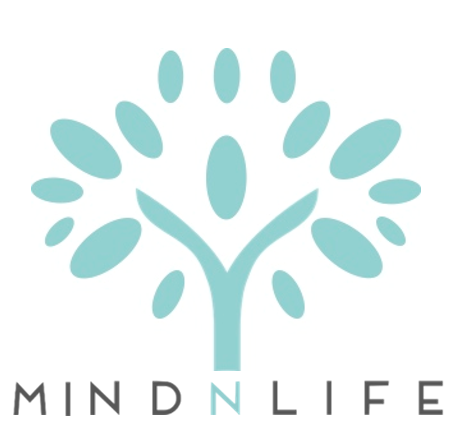(as published in The HK Hub)
In a recent meeting of SEN professionals I was asked to host one of the six round table discussions. The topic I chose was ADHD in the classroom and how to manage it. I was astounded to see that three quarters of the group joined me to discuss that particular topic, demonstrating that it is an issue that is particularly prevalent in schools. Teachers and school staff are looking for strategies to accommodate children with ADHD and ADD symptoms in the classroom.
It will then come as no surprise that recent studies show that 8-10% of school age children meet the necessary criteria for an ADHD diagnosis.
Often mistakenly described as a behaviour problem, attention deficit is in fact a disorder of the brain’s executive function and the ability to plan and prioritise. It is a disorder that is widely misunderstood and misdiagnosed.
Attention Deficit Hyperactivity Disorder (ADHD/ADD), is a neurodevelopmental disorder and affects millions of people regardless of age, gender, ethnicity or socioeconomic status.
ADHD is a chronic condition marked by persistent inattention, hyperactivity, and sometimes impulsivity, beginning in childhood but often lasting right through adulthood. While we once thought that mainly boys were affected by ADHD and that they would grow out of it, this is not true. We now know that both boys and girls, as well as men and women, can all live with the effects of ADHD and it causes significant impairment at school, work and throughout the lives of those affected by it.
HOW DOES ADHD PRESENT?
Symptoms of ADHD can differ from person to person, but there are three basic types:
ADHD – Predominantly Inattentive Presentation (ADD)
Fails to give close attention to details or makes careless mistakes
Has difficulty sustaining attention
Does not appear to listen
Struggles to follow through on instructions
Has difficulty with organisation
Avoids or dislikes tasks requiring sustained mental effort
Loses things
Is easily distracted
Is forgetful in daily activities
ADHD – Predominantly Hyperactive/Impulsive Presentation
Fidgets with hands or feet or squirms in chair
Has difficulty remaining seated
Runs about or climbs excessively in children; extreme restlessness in adults
Difficulty engaging in activities quietly
Acts as if driven by a motor; adults will often feel internally as if they were driven by a motor
Talks excessively
Blurts out answers before questions have been completed
Difficulty waiting or taking turns
Interrupts or intrudes upon others.
ADHD – Combined Presentation
Individual meets both sets of inattention and hyperactive/impulsive criteria
HOW DOES ADHD IMPACT CHILDREN?
Children with ADHD are at an increased risk of lower academic performance and social problems including peer problems and teacher conflicts. Many receive lower academic scores due to problems with attention span, hyperactivity and impulsivity.
A typical problem is displayed by children who do not turn in schoolwork to the teacher even though it has been completed. Many have “chaotic” book bags and lockers. The transition into middle school is especially challenging for children with ADHD because they are expected to be able to switch from class to class and remember everything that goes with changing classrooms.
How can you help your child who has ADHD?
Research shows that Multi Disciplinary Treatment involving the parents, schools and professionals is most effective.
1. You are not alone as a parent, you will worry. That’s fine. But make your worrying productive, not toxic, do it with someone else. Worry with an expert, another parent, your spouse, your child’s teacher, the doctor, or any other person you trust.
2. Educate yourself. Learn as much as you can about ADHD as this is essential for your understanding and acceptance of your child’s challenges. Beware of the internet! It’s full of the wrong ‘information.’
3. Adopting a strength-based approach to ADHD is the most effective parenting strategy. Dr Halliwell, an expert in ADHD, compares an ADHD brain to a Ferrari engine with bicycle brakes. Truly, that’s what the treatment of ADHD is all about: strengthening the brakes, so your child can use the power of his/her engine to win races.
4. Find the right professionals to oversee ADHD treatment. Early intervention and proper guidance is essential.
5. Enlist the school’s help to understand your child’s challenges and get your child ’s teachers involved.
6. Make sure your child gets lots of physical activity. John Ratey, author of Spark, has shown beyond doubt, that exercise dramatically helps ADHD. According to Ratey, regular ‘brain breaks,’ (a chance to get up and move around, at least every hour) are essential for children and in my experience, children find these helpful.
7. Pay attention to sleep and nutrition and consider having your child learn how to meditate. Research shows that Mindfulness has been extremely successful for ADHD challenges.
8. Take routines and structure seriously. For every problem that arises, consider a new structure as a first solution. For example, if remembering assignments is a problem, consider liaising with the teachers to ensure that you know what is due and when. Have simple, consistent rules, so you don’t have to make them up every day.
9. Learn the facts about medication before you decide to use it.
10. Ensure your child gets positive human interaction. Many children with ADHD can go through a day, even a week, without a friendly glance or encouraging word. I have seen this many times and it can be detrimental to the child.
Finally, ADHD can be a gift so it’s important to nurture your child so that they feel it is a positive rather than negative part of them. Believe in the potential of your child—and make sure he or she does, too.
Read the original article HERE

Dr. Quratulain Zaidi (BSc. Hons, MSc, MSc, PhD) is a mother and a member of the British Psychological Society and British Association Counselling & Psychotherapy and abides by the Ethical Framework for Good Practice in Counselling and Psychology. She has lived in Hong Kong and Singapore for 12 years. She specialises in assisting families with issues including parenting, teen issues, Cybersafety, marriage guidance, post natal depression, stress and anxiety disorders, depression, bullying, eating disorders, OCD and self-harm. She is an expert in educational assessments and learning challenges in children, for example ADHD, ADD, Dyslexia and ASD.







